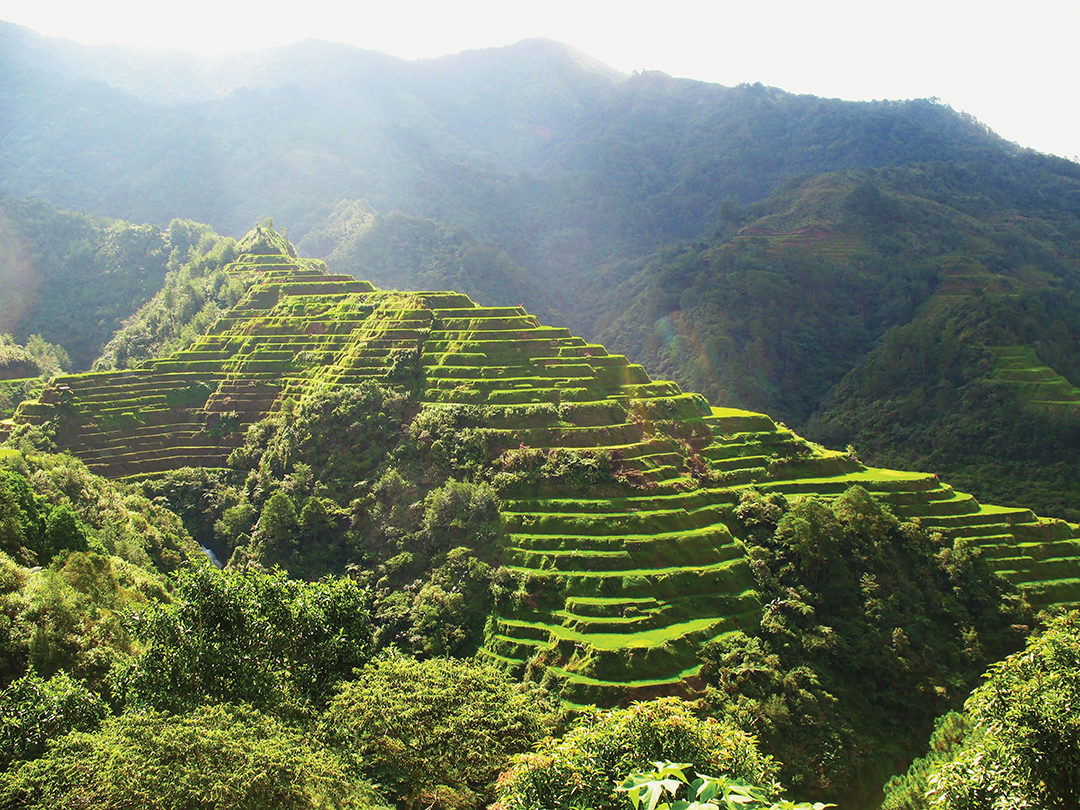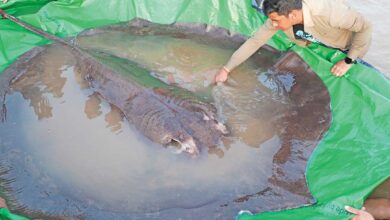Famed ancient rice terraces face modern threats

Agence France-Presse
It is fiesta time in the famed rice terraces of the northern Philippines. Young men in colorful tribal clothing pound ancient rhythms on brass gongs as wild boars squeal ahead of slaughter.
The annual festivals, held in remote mountain communities after the planting of the rice that’s at the core of their existence, are a vital way of passing centuries-old customs to new generations. Those traditions are the soul of the Cordillera ranges, one of the Philippines’ most spectacular regions, where Ifugao tribespeople are custodians of World Heritage-listed rice terraces.
The stepped paddy fields, built 2,000 years ago and the highest in Asia, as well as the Ifugao’s traditional lifestyles, are facing unprecedented threats amid the relentless forces of modernity.
“There is a danger of these beautiful areas turning into urban jungles,” said Edison Molanida, World Heritage sites manager for the Philippines’ culture commission. “One of the main threats is the rapid pace of development in the area.”
In its description justifying World Heritage status, the United Nations Educational, Scientific and Cultural Organization (UNESCO) describes the region as “a living cultural landscape of unparalleled beauty.” On misty mornings, when the first rays of pale orange sunshine fall across the stone walls that follow the mountains’ contours, the terraces look like giant staircases climbing to the heavens.
UNESCO also praises the Ifugao people for having remained in harmony with nature for so long. They use herbs instead of pesticides, eschew fertilizers, and generally show great care for limited natural resources. Their irrigation system, which taps water from mountaintop forests and shares it equitably throughout the communities, is hailed as a “mastery of engineering.”
A generation or two ago, many of the Ifugao villages and the lifestyles of the people who lived in them largely resembled those of centuries ago. Today the region, home to roughly 100,000 people and a day’s drive from the capital, Manila, retains many of the aspects celebrated by UNESCO.
Change Afoot
Radical change is underway. Introduced pests, including giant Indonesian earthworms, are causing damage to the structures of the terraces, leading some to collapse.
In Mayoyao, one of the region’s most scenic villages, local officials say the worms, as well as snails originally brought in as a food for protein, are the biggest dangers to the terraces.
Molanida, the World Heritage sites manager, described the “abandonment of the rice growing culture” by significant numbers of Ifugao as one of the biggest dangers for the region. “If the younger generation are no longer interested in the rice culture and move to cities or adopt modern lifestyles, who will be left to tend to the terraces?”
Locals Optimistic
In a lengthy interview from his mountaintop office overlooking the terraces, Mayoyao Vice Mayor Jimmy Padchanan insisted local elders were working hard and successfully to control the march of modernity.
“We cannot deny the effects of modernization on our culture,” Padchanan said. “But it is not all bad. We are blending old societies with the new, while maintaining many of our values.”
Padchanan said he was confident the rice terraces and ancient traditions could survive the onslaught of the 21st century. “The Mayoyao rice terraces will continue to be handed down from generation to generation. The rice terraces shall endure for as long as the Mayoyao are here,” he said.
Locals also pointed out they had a right to develop and enjoy modern society, and should not have to live in fossilized communities. Standing in traditional tribal clothes during a recent festival, Mayoyao elder and rice farmer Mario Lachaona spoke passionately about preserving customs but cautioned against overromanticizing the old days.
“Life before was so hard,” said Lachaona, who is in his late 60s, a wiry father of six and grandfather of 18. He said his grandchildren had much better nutrition and education than his generation, and their opportunities to find work other than subsistence farming were much greater. “Life is a lot easier now,” Lachaona said.
The expected paving in the next few years of the only road to Mayoyao will make life easier again in many ways. Padchanan said there were plans to sell vegetables in faraway towns, providing a welcome source of extra income for rice farmers.
Only a few hundred foreign tourists visit a year, and the paved road would hopefully bring a lot more. However, Molanida feared those sorts of developments would not be managed well. “It is up to the Ifugao people to decide if they want to fight harder to conserve their culture and prevent chaotic development,” he said. “Otherwise the rice terraces may become grass terraces.”




